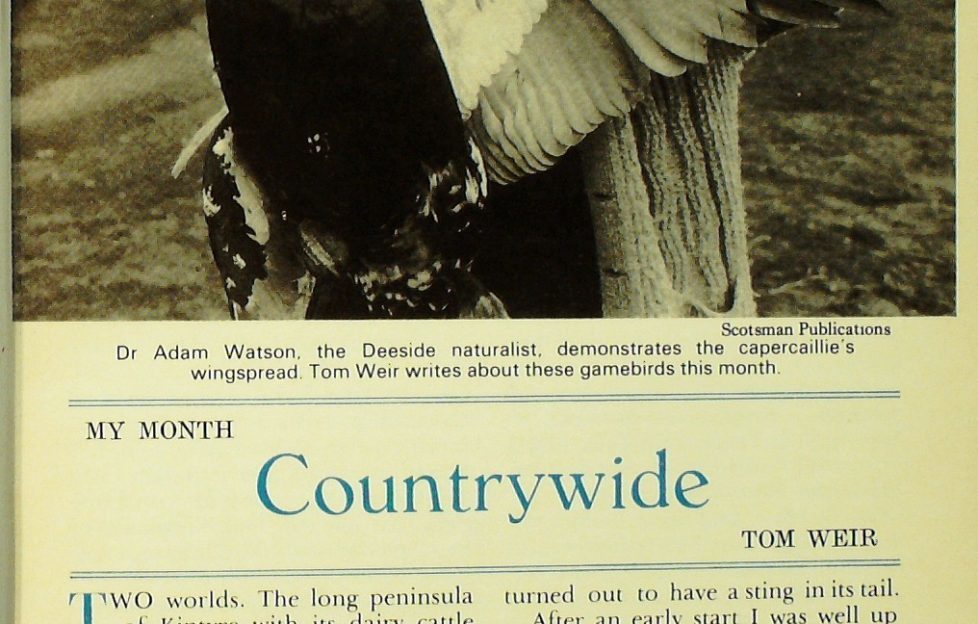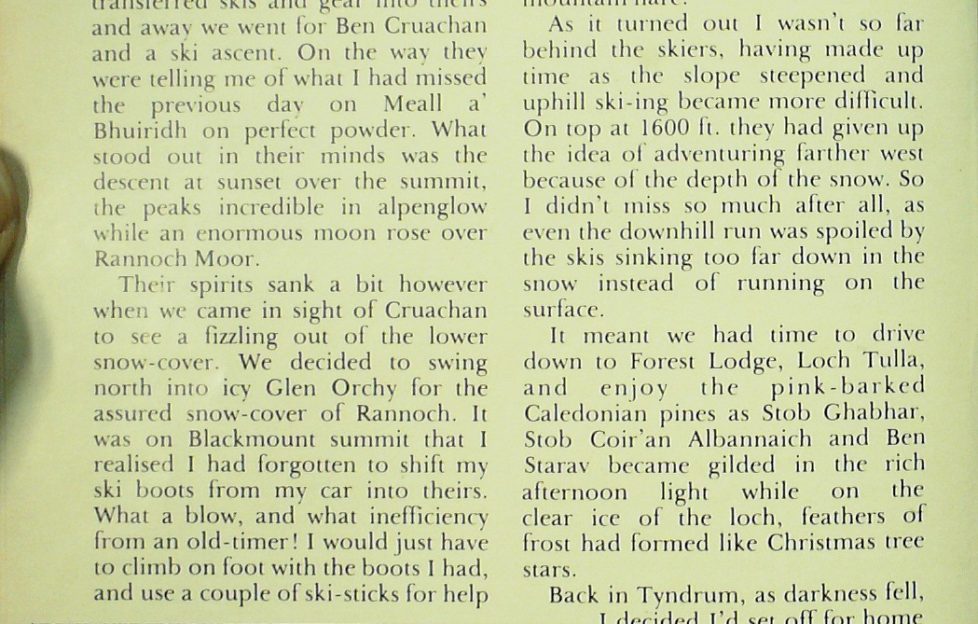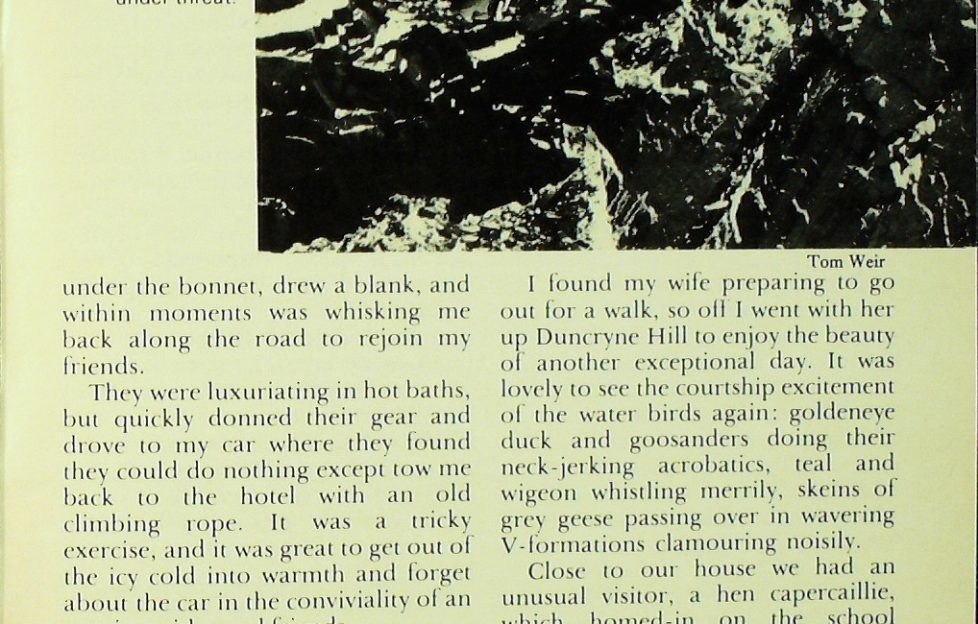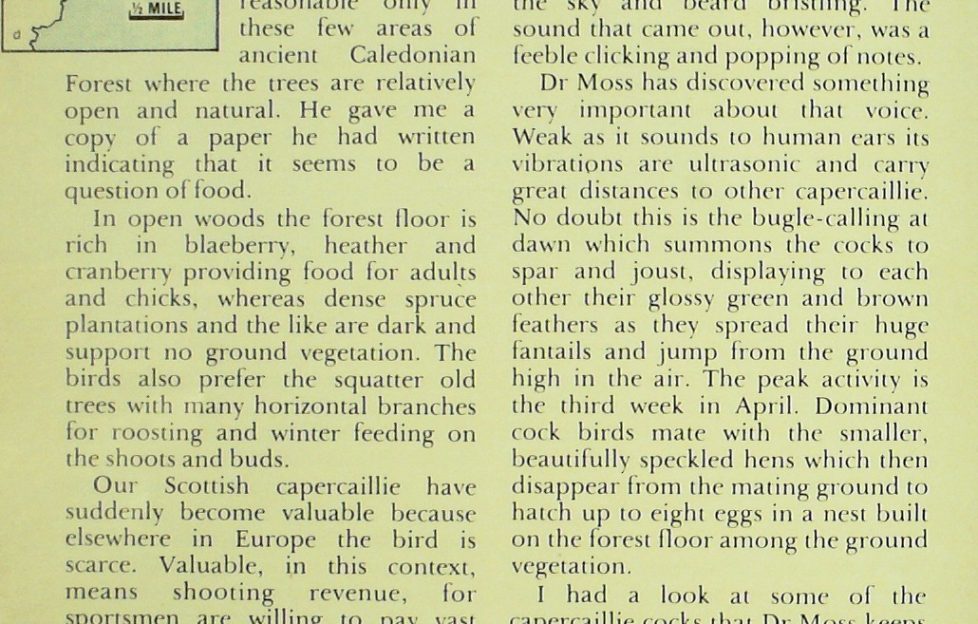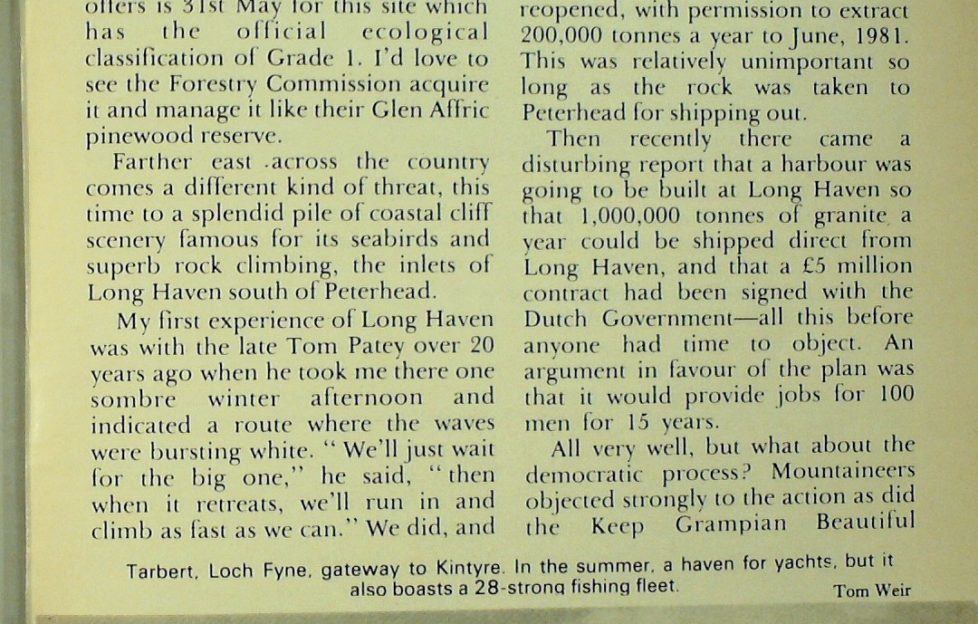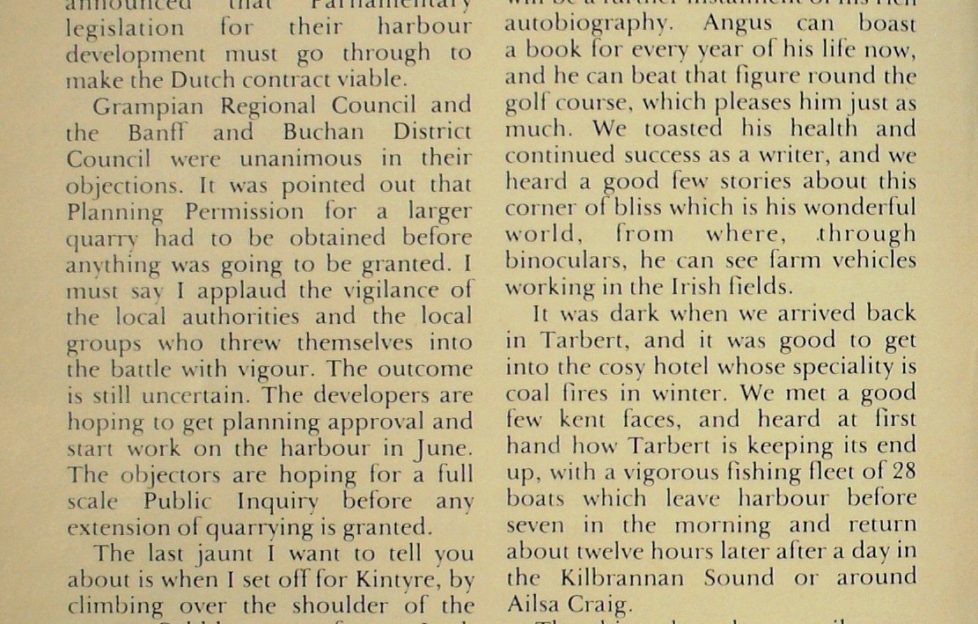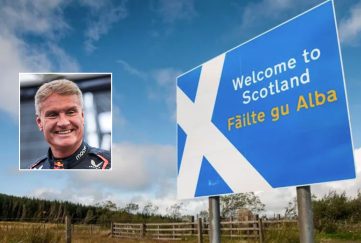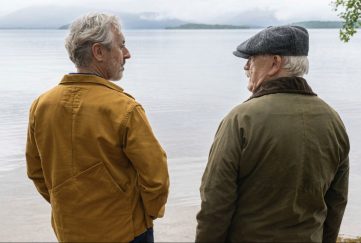Tom Weir | Countrywide (III)
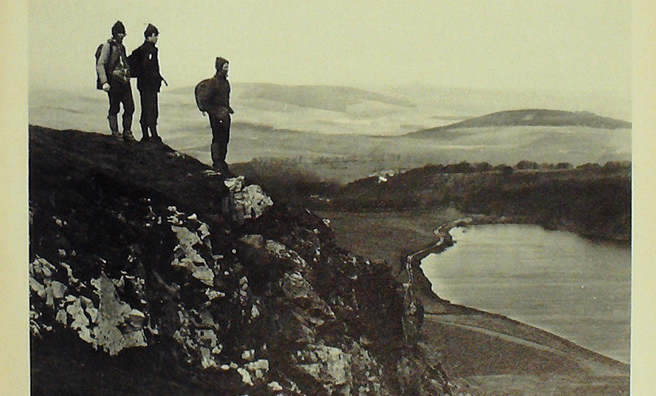
From Peterhead to Kintyre, Tom was always keen to protect the wild Scottish landscape from man’s exploitation
Farther east across the country comes a different kind of threat, this time to a splendid pile of coastal cliff scenery famous for its seabirds and superb rock climbing, the inlets of Long Haven south of Peterhead.
My first experience of Long Haven was with the late Tom Patey over 20 years ago when he took me there one sombre winter afternoon and indicated a route where the waves were bursting white.
“We’ll just wait for the big one,” he said, “then when it retreats, we’ll run in and climb as last as we can.”
We did, and I’ve seldom been so terrified or moved faster on steep rock, imagining any moment I was going to be sucked back into the sea, for the bursting waves were on our heels. It was a relief to put on the rope and set off on a very airy and severe climb worthy of Lochnagar.
Next time I went back it was summer, with the seapinks flowering and birds thronging the seaward ledges.
In the past, quarries have been dug into these cliffs, and in recent times they have been reopened, with permission to extract 200,000 tonnes a year to June, 1981. This was relatively unimportant so long as the rock was taken to Peterhead for shipping out.
A Worrying Development
Then recently there came a disturbing report that a harbour was going to be built at Long Haven so that 1,000,000 tonnes of granite a year could be shipped direct from Long Haven, and that a £5 million contract had been signed with the Dutch Government—all this before anyone had time to object.
An argument in favour of the plan was that it would provide jobs for 100 men for 15 years.
All very well, but what about the democratic process? Mountaineers objected strongly to the action as did the Keep Grampian Beautiful Campaign: The Nature Conservancy voiced their displeasure.
Even as they did so the Longhaven Quarries announced that Parliamentary legislation for their harbour development must go through to make the Dutch contract viable.
Grampian Regional Council and the Banff and Buchan District Council were unanimous in their objections. It was pointed out that Planning Permission for a larger quarry had to be obtained before anything was going to be granted.
I must say, I applaud the vigilance of the local authorities and the local groups who threw themselves into the battle with vigour.
The outcome is still uncertain. The developers are hoping to get planning approval and start work on the harbour in June.
The objectors are hoping for a full scale Public Inquiry before any extension of quarrying is granted.
Past the shoulder of the Cobbler
The last jaunt I want to tell you about is when I set off for Kintyre, by climbing over the shoulder of the Cobbler, past frozen Loch Fyne and a milder world of brown hills and reflections on the water weaving along to Inverary and Tarbert.
We knew we would be spending the night there, so instead of stopping we pressed on across the narrows, down the West Loch and east for Skipness with the Arran hills standing up grandly above the wee glen taking us down to the sea.
Soon we were spinning down by Carradale, hearing about the big wind that had blown down a lot of forest trees in mid-December all now being cleared up.
Planting was well ahead, too. Then, past Saddell and its abbey with memories of Somerled who drove the Vikings from Kintyre, we went on to Campbeltown.
We had come to meet Angus MacVicar and caught him just as he arrived home from a Presbytery meeting. He was telling us about his forthcoming book, his 71st, which will be called Demons in my Diary and will be a further instalment of his rich autobiography.
Angus can boast a book for every year of his life now, and he can beat that figure round the golf course, which pleases him just as much.
We toasted his health and continued success as a writer, and we heard a good few stories about his corner of bliss which is his wonderful world, from where, through binoculars, he can see farm vehicles working in the Irish fields.
It was dark wen we arrived back in Tarbert, and it was good to get into the cosy hotel whose speciality is coal fires in winter.
We met a good few kent faces, and heard at first hand how Tarbert is keeping its end up, with a vigorous fishing fleet of 28 boats which leave harbor before seven in the morning and return about twelve hours later after a day in the Kilbrannan Sound or around Ailsa Craig.
The thing that always strikes me about Kintyre is the enthusiasm of its people who live on a peninsula that is almost an island.
Very heartening in these days when there is so much bad news from all corners of the world. I look forward to going back there soon.
2016 Update:
The proposal for the Longhaven Quarry extension eventually foundered, thanks to the efforts of the local groups Tom applauds here, who formed “The Longhaven Coastal Alliance”, which put significant pressure on those involved with the quarry.
Read more from Tom Weir next Friday.
More…
Read more from Tom!
We have an extensive archive of Tom Weir’s great columns for The Scots Magazine, and we’re slowly but surely getting them published digitally for new generations to enjoy.
To see the columns we have online so far, click here.


